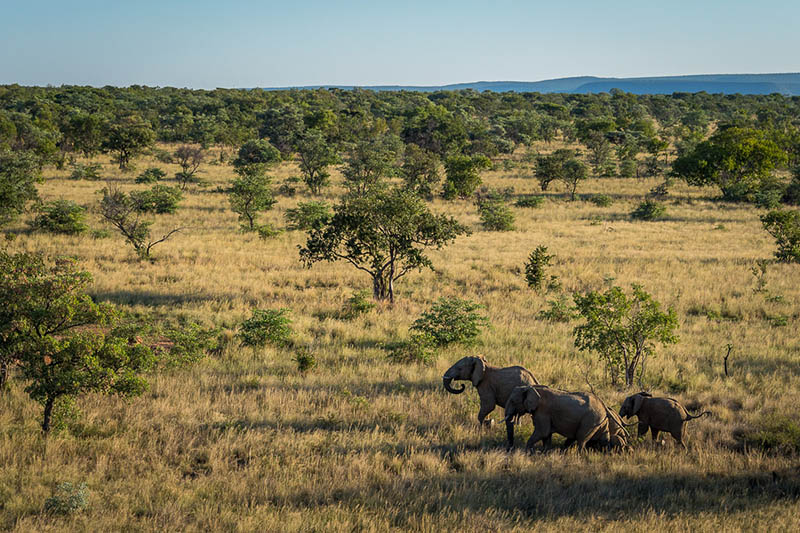LELE — The Lapalala Elephant Landscape Experiment
- Contact:
Jesse M. Kalwij, Annemieke Müller (LW), Sebastian Schmidtlein, Fabian Faßnacht, Peter C. le Roux (UP), Michelle Greve (UP), Bettine Jansen van Vuuren (UJ)
- Project Group:
Vegetation
- Funding:
Lapalala Wilderness
- Partner:
Lapalala Wilderness (LW), University of Pretoria (UP), University of Johannesburg (UJ)
- Startdate:
09/2020
- Enddate:
open-ended

The African elephant (Loxodonta africana) is an important driver of savanna dynamics. However, few studies have tested the impact of these megaherbivores experimentally. Therefore, the long-term ecological impact of growing elephant populations in southern Africa is still poorly understood. The recent introduction of an elephant population to Lapalala Wilderness provides a unique opportunity to fill this gap in science.
The LELE project aims to determine the impact of elephants on savanna ecosystem dynamics by means of a long-term landscape ecological experiment and monitoring programme. We are currently setting up several experimental 6-ha blocks in the home range of a recently re-introduced elephant population. Confounding variables such as distance from water, vegetation type, and edaphic conditions will be controlled for. For logistic and aesthetic purposes, blocks will be placed far enough from existing tracks to be invisible for visitors, yet as close as possible to keep ecological impact of the experiment at a minimum. Herbivore impact will be monitored using three treatment levels: (i) elephant exclosure, (ii) all herbivore exclosure, and (iii) no exclosure as control. Tree dynamics will be studied using two treatment levels: (i) control, and (ii) tree removal. Therefore, each block will consist of 3 × 2 1-ha plots.
The LELE project is unique in design, spatial scale, and longevity. For the first time, the impact of elephants on savanna ecosystem dynamics will be measured in an experimental setting from the start of their re-introduction. Moreover, the size and number of experimental blocks ensures distinguishing between direct and indirect impact of elephants. Lapalala Wilderness appreciates that elephant-induced ecosystem changes typically extent beyond the time-frame of regular research funding programmes. In collaboration with Lapalala Wilderness, we aim to keep this experiment up and running for as long as possible. Therefore, this project will provide suitable baseline data for current and future research projects across all trophic levels. In addition, the outcome of this project will continuously provide the managers of the area with current and accurate veld condition data and management recommendations. Finally, the monitoring programme will make a valuable contribution to the Lapalala Wilderness School for field excursions and training.
Potential research partners or students are welcome to contact us to discuss participation in the LELE project.
